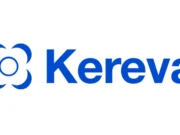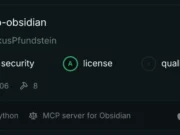The Content-Type header in HTTP requests plays a critical role in web application security.
It specifies the format of the data being sent, but improper handling or parsing of this header can expose applications to vulnerabilities such as Cross-Site Scripting (XSS), Cross-Site Request Forgery (CSRF), and Web Application Firewall (WAF) bypasses.
Below, we explore these issues in detail.
XSS And Content-Type
XSS attacks exploit vulnerabilities where malicious scripts are executed in the victim’s browser.
Certain Content-Types, like text/html, application/javascript, or even improperly handled application/json, can be leveraged for XSS attacks. For example:
- If a server improperly interprets a JSON payload as HTML, attackers can inject scripts to execute malicious actions.
- Differences in how browsers process Content-Type headers can further complicate defenses.
CSRF via Content-Type Manipulation
CSRF attacks trick authenticated users into performing unintended actions on a website.
Developers often rely on Content-Type-based protection to mitigate CSRF risks by accepting only specific formats like application/json. However, this approach has limitations:
- Attackers can bypass CORS preflight checks by setting the Content-Type to
text/plainor similar values, tricking servers into interpreting the payload as valid JSON. - Frameworks like Laravel and Symfony have been found vulnerable to incorrect Content-Type parsing, enabling CSRF attacks when default protections are disabled.
WAF Bypass Using Content-Type
Web Application Firewalls (WAFs) are designed to block malicious requests but can be bypassed with creative use of the Content-Type header:
- Combining multiple MIME types (e.g.,
application/x-www-form-urlencoded;/json) can confuse WAFs, leading to successful injection attacks. - JSON-based SQL injection payloads have been shown to bypass WAFs that lack proper JSON syntax support.
- Techniques like obfuscation, encoding (e.g., Unicode or Base64), and splitting payloads across multiple requests further enhance bypass capabilities.
Frameworks and libraries often handle Content-Type parsing differently:
- Laravel and Symfony have faced issues with JSON parsing inconsistencies.
- Flask and CherryPy exhibit unique quirks in handling multipart and JSON content types, which attackers can exploit.
To secure applications from these vulnerabilities:
- Strict Validation: Enforce strict Content-Type validation on both client and server sides.
- Sanitize Inputs: Always sanitize user inputs to prevent script injection.
- Use Tokens: Implement CSRF tokens and ensure they are validated for all state-changing requests.
- Harden WAF Rules: Regularly update WAF configurations to handle advanced evasion techniques.
- Framework Updates: Keep frameworks and libraries up-to-date with patches for known vulnerabilities.
By understanding the nuances of Content-Type handling and its implications for XSS, CSRF, and WAF bypasses, developers can build more secure web applications.












%20Works.png)




.webp)